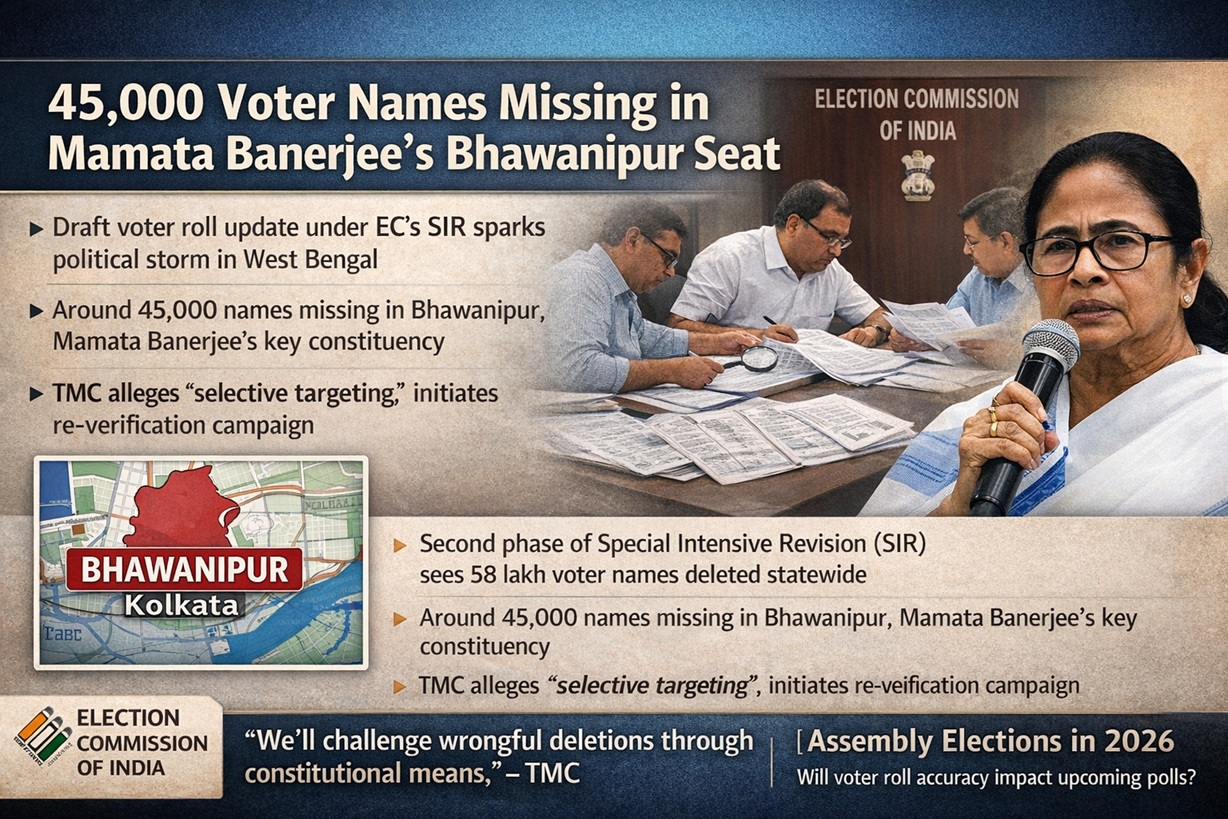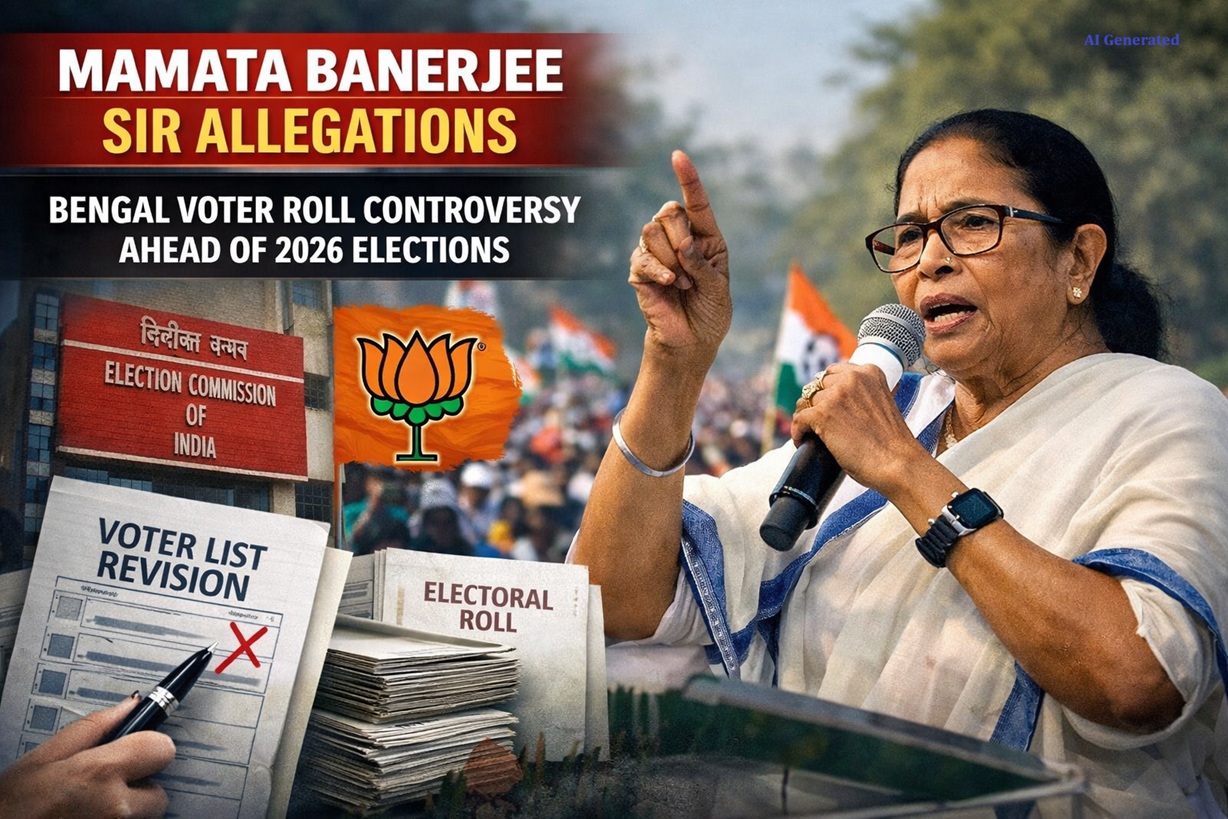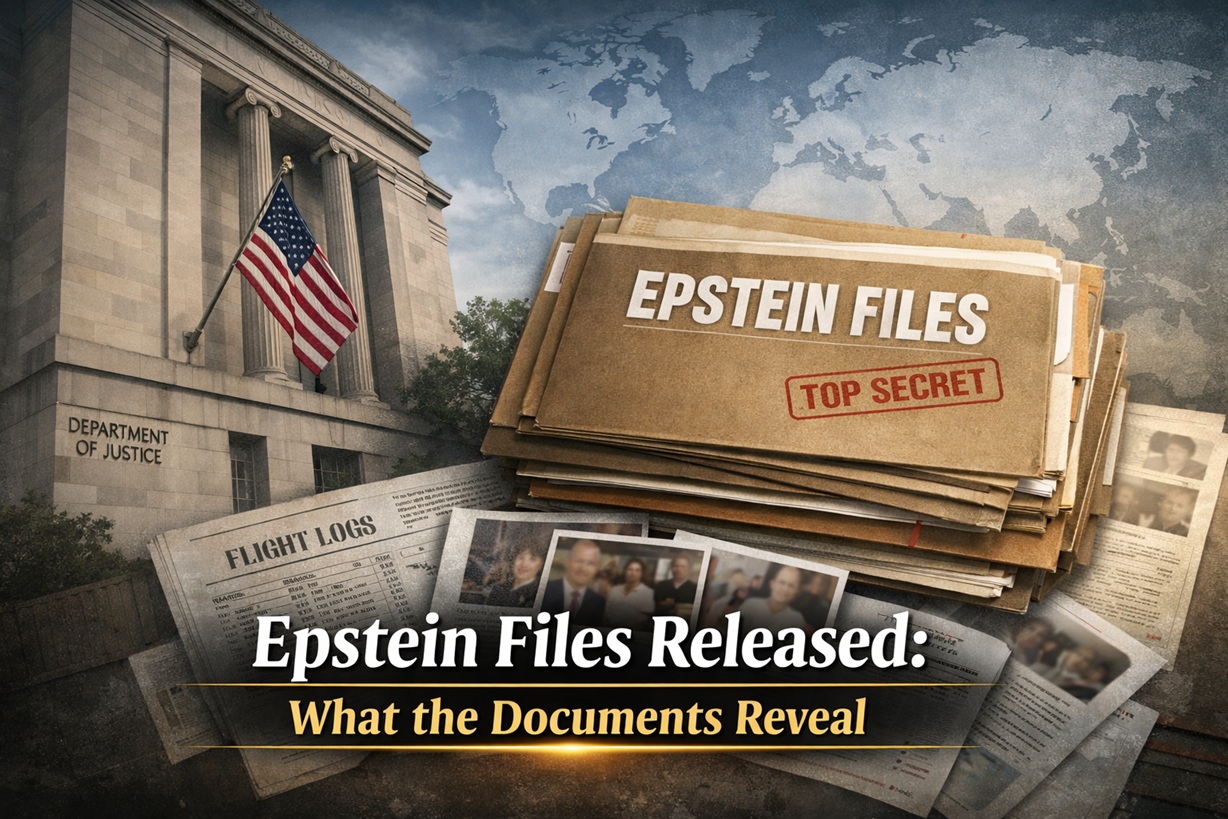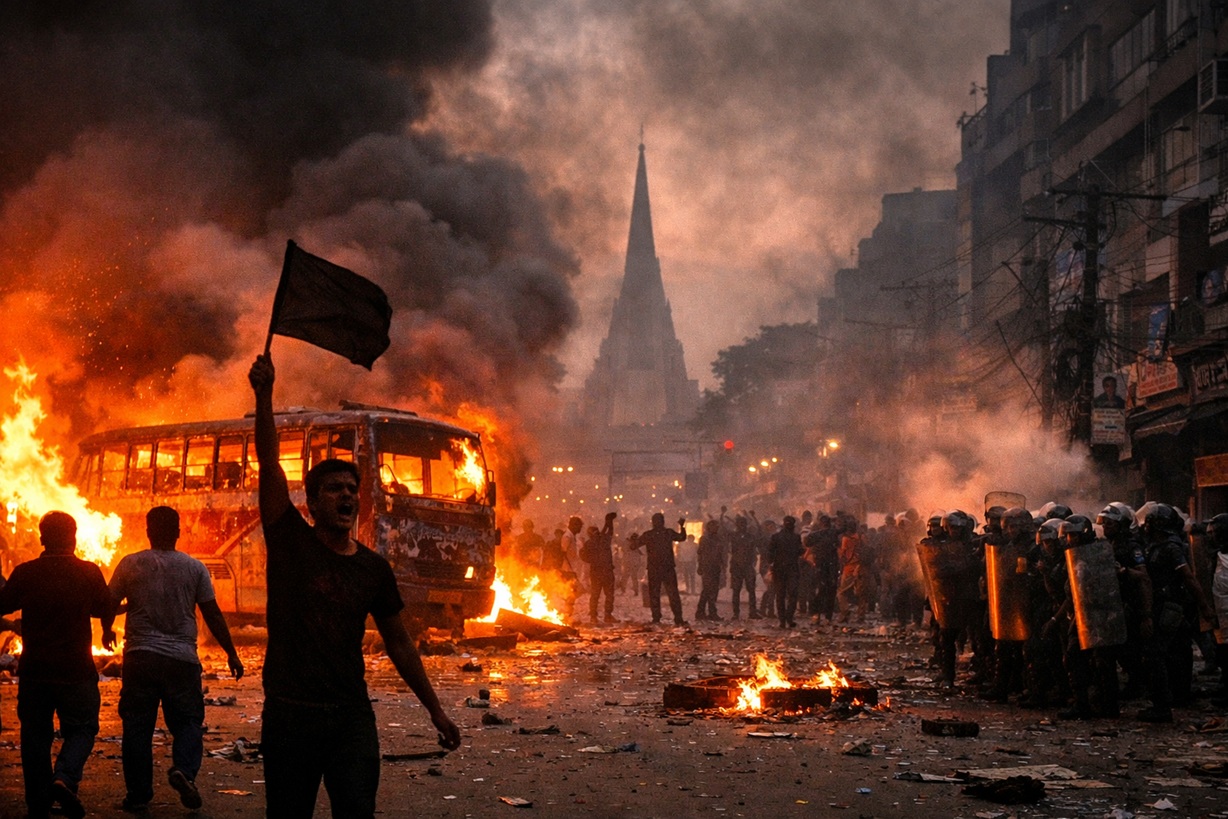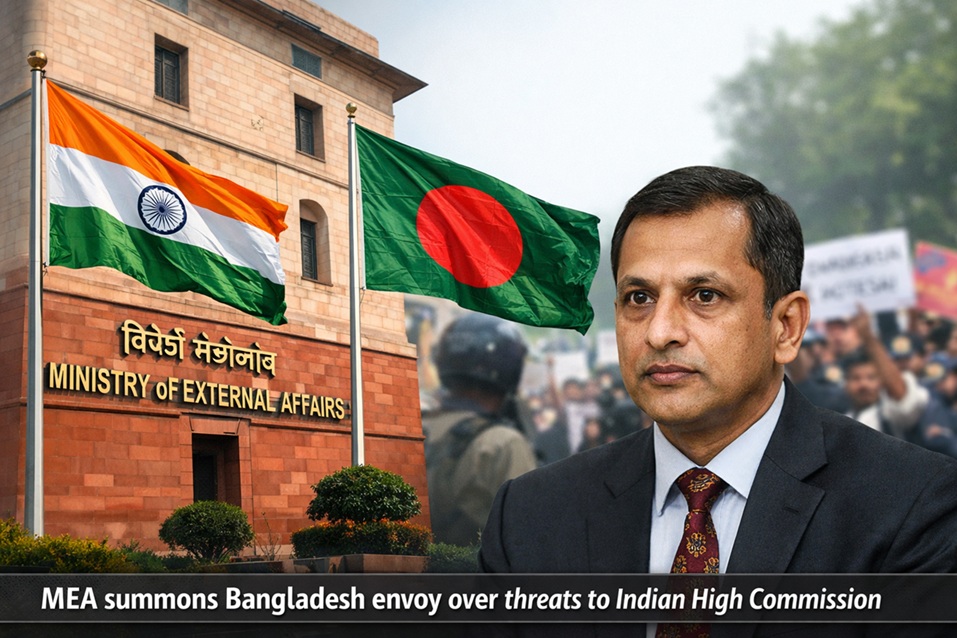One Nation-One Election (ONOE) refers to the proposal of conducting simultaneous elections of the Lok Sabha, state legislative assemblies, Municipalities and Panchayats The idea behind ONOE is to improve the electoral process and reduce the frequency of elections, saving time and resources. The cost of conducting elections in India is substantial, with crores of rupees being spent each time. Visionary Prime Minister Narendra Modi has been advocating for simultaneous elections for the past two decades, highlighting the need to address this issue. The Election Commission of India has also been working on this concept, and the submission of the report today (March 14th 2024) marks a significant step towards its implementation.
Report on One Nation-One Election
On March 14th, 2024, the high-level committee formed by the government under Ramnath Kovind submitted a comprehensive report on One Nation One Election to President Draupati Murmu. The report, consist of more than 21 volumes and 18,626 pages, and was prepared by the committee, which included members such as Home Minister Amit Shah, Ghulam Nabi Azad, and Harish Salve. The committee worked for 191 days, and held a total of 65 meetings to discuss various aspects of simultaneous elections.

History of One Nation-One Election (ONOE)
While the concept has been around since 1983, synchronized political elections were the norm in India until 1967. However, due to various factors, the cycle got interrupted, and since then, elections have been held at different times.
The first general elections to the House of People (Lok Sabha) and all state legislative assemblies were held simultaneously in 1951-52.
That practice continued in three subsequent general elections held in the years 1957, 1962 and 1967.
However, due to the premature dissolution of some legislative assemblies in 1968 and 1969, the cycle was disrupted.
Countries where One Nation-One Election (ONOE) is already implemented
The high-level panel on ‘one nation, one election’ studied election processes in six countries including South Africa, Sweden and Belgium, before recommending simultaneous polls for Lok Sabha and state assemblies in India. The other countries where simultaneous elections are conducted are Germany, Japan, Indonesia, the Phillipines and Belgium.
Benefits of One Nation-One Election (ONOE)
- Cost Savings: Election cost is increasing every passing year. Presently, the cost of holding elections for Lok Sabha and State Legislative Assemblies of States and UTs has been pegged at INR 4500 crore by the ECI.


- Model Code of Conduct (MCC): The imposition of the Model Code of Conduct (MCC) during election time, holds the entire development programme and activities of the Union and State governments in a poll-bound State. It even affects normal governance.
- The burden on crucial manpower that is deployed during election time. Approx twenty-five lakh officers and staff and a few lakh police personnel are deployed every time for about two to three months, seriously affecting their normal duties.
- Impact on delivery of essential services: Holding political rallies disrupts road traffic and also leads to noise pollution. If simultaneous elections are held, this period of disruption would be limited to a certain predetermined period.
- In certain states, given multiple elections to panchayats and local bodies in addition to assembly and general elections, as many as 200-300 days in a year could be consumed by polls.
- Frequent elections also lead to government functionaries, such as ministers, working more for elections than carrying out their official duties.
- Frequent elections lead to political corruption as significant funds are raised for each elections
- A nation always in election mode affects infrastructure and capital expenditure-related projects due to delays in project implementation due to a lack of approvals and clearances during the model code of conduct.
- During elections, whether for the Lok Sabha or the assemblies, the entire administrative set-up throughout the country slows down considerably and all other normal functions and activities of the government, including developmental work, are pushed to the background.
- Frequent elections lead to state governments announcing freebies to woo the electorate, often straining their finances
- Fixed interval elections have the potential to reduce “Horse Trading” by elected representatives
- Simultaneous elections can reduce voter fatigue and inconvenience. Voters often have to go to the polls multiple times in a short span, leading to reduced enthusiasm and participation. ONOE can address this issue by providing citizens with an opportunity to cast their votes for all representatives at once, thereby encouraging higher voter turnout.
Challenges of One Nation-One Election (ONOE)
- Constitutional amendment would be needed to sync the term of the State Legislative Assemblies with that of the Lok Sabha
Article 83: It states that the term of the Lok Sabha will be five years from the date of its first sitting
Article 85: It empowers the President to dissolve the Lok Sabha
Article 172: It states that the term of the legislative assembly will be five years from the date of its first sitting.
Article 174: It empowers the Governor of the state to dissolve the Legislative Assembly.
Article 356: It authorises the Central Government to impose President’s Rule for failure of constitutional machinery in the state.
- Impact on Federal Structure:
- The Indian political system is based on a federal structure, where states have significant autonomy and power. ONOE could potentially disrupt this federal balance, as simultaneous elections might lead to the dominance of national issues and the centralization of power.
- Not all parties is supporting the Implementation of ONOE
- Opposition parties have raised concerns about the government’s motives and the reliability of electronic voting machines (EVMs).
- The opposition argues that the government wants to take advantage of simultaneous elections to promote its agenda.
- The issue of EVMs remains unresolved, with some opposition leaders claiming that they are manipulated to favour the ruling party but there is no concrete evidences to support the presumption
- There has been mixed response from different political parties towards the One Nation-One Election.

| In favour of ONOE | Against ONOE |
| Bharatiya Janata Party | Aam Aadmi Party |
| National People’s Party | Bahujan Samaj Party |
| All India Anna Dravida Munnetra Kazhagam | Communist Party of India (Marxist) CPI (M |
| ll Jharkhand Student Union (AJSU) | Indian National Congress |
| Apna Dal (Soney Lal) | All India United Democratic Front |
| ASOM Gana Parishad | All India Trinamool Congress |
| Biju Janata Dal | All India Majilis-EIttehadul Muslimeen |
| Janata Dal (United) | Communist Party of India (CPI) |
| Lok Jan Shakti Party (R) | Dravida Munnetra Kazhagam (DMK) |
| Mizo National Front | Naga People’s Front (NPF) |
| Shiv Sena | Samajwadi Party |
| Sikkim Krantikari Morcha | Marumalarchi Dravida Munnetra Kazhagam (MDMK) |
| Shiromani Akali Dal | Viduthalai Chiruthaigal Katchi |
| United People’s Party Liberal | Communist Party of India (MarxistLeninist) Liberation |
| Pattali Makkal Katchi | Social Democratic Party of India |
| Republican Party of India (Athawale) (RPI(Atwl)) | |
| Tamil Maanila Congress (M) | |
| Rashtriya Lok Janata Dal | |
| United Kisan Vikas Party | |
| Bharatiya Samaj Party | |
| Gorakha National Liberal Front | |
| Hindustani Aavam Morcha | |
| Indian Makkal Kalvi Munnetra Kazhagam | |
| Indigenous People’s Front of Tripura | |
| Jan Surajay Shakti | |
| Rashtriya Lok Jan Shakti Party | |
| Maharashtrawadi Gomantak Party | |
| Nishad Party | |
| Puthia Nidhi Katchi | |
| Rashtrawadi Congress Party (Ajit Pawar) | |
| Democratic Progressive Azad Party |
- Advantage to the National Party
- Bloomberg reported former chief election commissioner S.Y. Quraishi as saying that the policy change mostly benefits the party at the national level. “There is a study that shows that if elections are held simultaneously, 77% of people vote for the same party,” said Quraishi, who led the Election Commission from 2010 to 2012.
- Erosion of Regional Identity:
- Critics argue that ONOE may lead to the erosion of regional identity and issues. Smaller regional parties might struggle to gain attention in a nationalized election campaign. This could diminish the representation of diverse regional interests and concerns.
- Logistical Challenges
- At present, one voting machine is being used at every polling station for taking a poll. For holding simultaneous elections, the requirements for EVMs and the VVPATs will double, because for every polling station, the ECI has to provide two sets (one for election to the Legislative Assembly and second for that to the Lok Sabha).

- There will also be an additional requirement of the polling staff.
- There will be difficulty in transporting materials to the polling stations.
- There will be a need for better security arrangements for simultaneous elections
- Storing EVMs after elections.
One Nation-One Election: Key takeaways from Kovind panel’s report
- The committee emphasised the need to restore the cycle of simultaneous elections, which was disrupted after the initial decades of India’s independence.
- Panel noted that holding multiple elections every year places a significant burden on various stakeholders, including the government, businesses, workers, courts, political parties, candidates, and civil society.
- The panel recommended constitutional amendments so elections for the Lok Sabha, all state assemblies, and local bodies can be held by 2029.
- The committee recommended a two-step approach to holding simultaneous elections. In the first step, elections to the House of the People and state legislative assemblies should be synchronized. In the second step, elections to Municipalities and Panchayats should be synchronized in such a way that it is held within 100 days of the Lok Sabha and State assembly elections
- For the purpose of synchronising Lok Sabha and assembly elections, the president shall notify the date of the first sitting of the Lok Sabha after a general election as the “appointed date”.
- The tenure of all state assemblies formed via polls after the “appointed date” and before the expiry of the full term of the Lok Sabha, will be only for the period ending up to the subsequent parliamentary polls. After this one-time transitory measure, all Lok Sabha and assembly polls will be held simultaneously.
- In the case of a hung House, or no-confidence motion, fresh elections can be held for the remainder of the five-year tenure.
- The committee emphasized the significance of the single electoral roll and single elector’s photo identity card (EPIC) (voter card) for elections to all three tiers of the Indian government – Centre (Lok Sabha), State (Legislative Assembly) and local (municipalities and panchayats) to safeguard the rights of voters.
- An Implementation Group should be constituted to oversee the execution of the recommendations.
- The Election Commission of India and State Election Commissions should draw up plans and estimates in advance for logistical arrangements, including the procurement of equipment like EVMs and VVPATs, and deployment of polling personnel and security forces.
While the committee’s recommendations provide a roadmap for implementing One Nation One Election, there are challenges to overcome. Overall, the concept of One Nation, One Election (ONOE) has the potential to streamline the electoral process and reduce the burden on the government and citizens. ONOE was already in place till 1967, but after a long gap, re-implementation would require careful consideration and consensus among all stakeholders. It is estimated that diminishing the frequency of elections could result in savings ranging from Rs 7,500 crore to Rs 12,000 crore. (Reference: ET dated Feb 12, 2024). The committee’s report provides a starting point for further discussions and deliberations on this important issue and a step ahead towards implementation by 2029.
